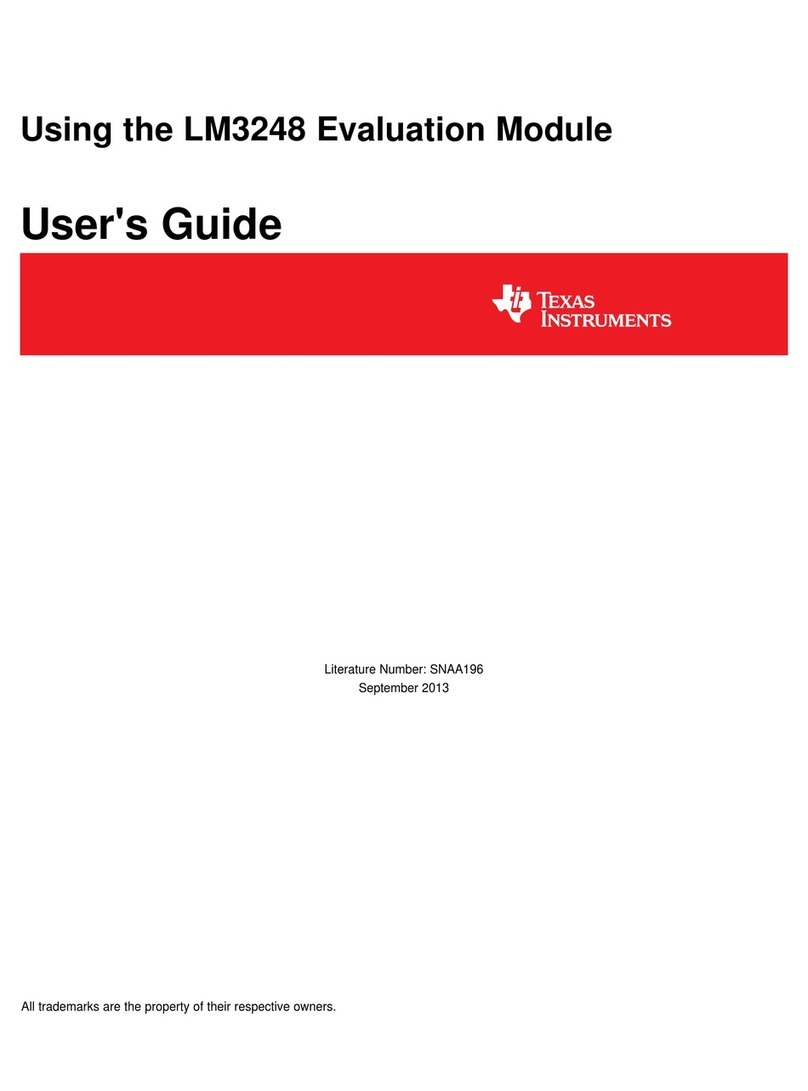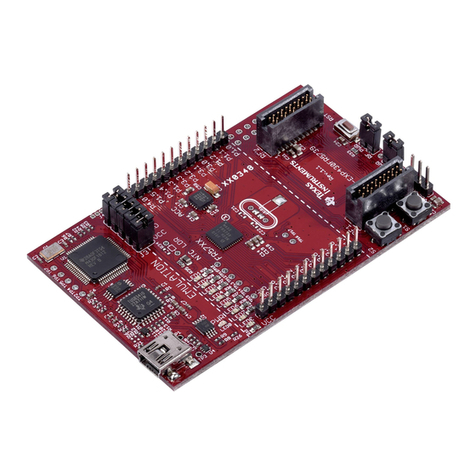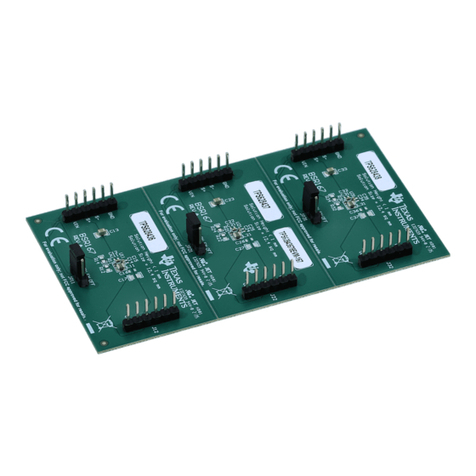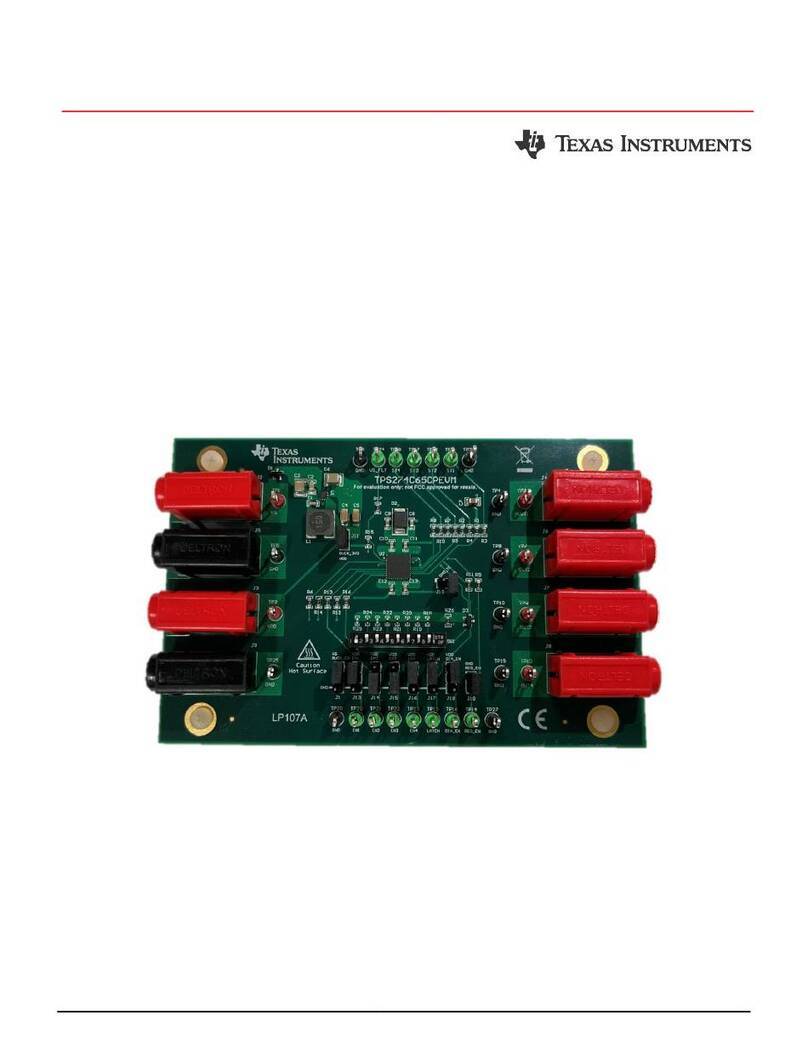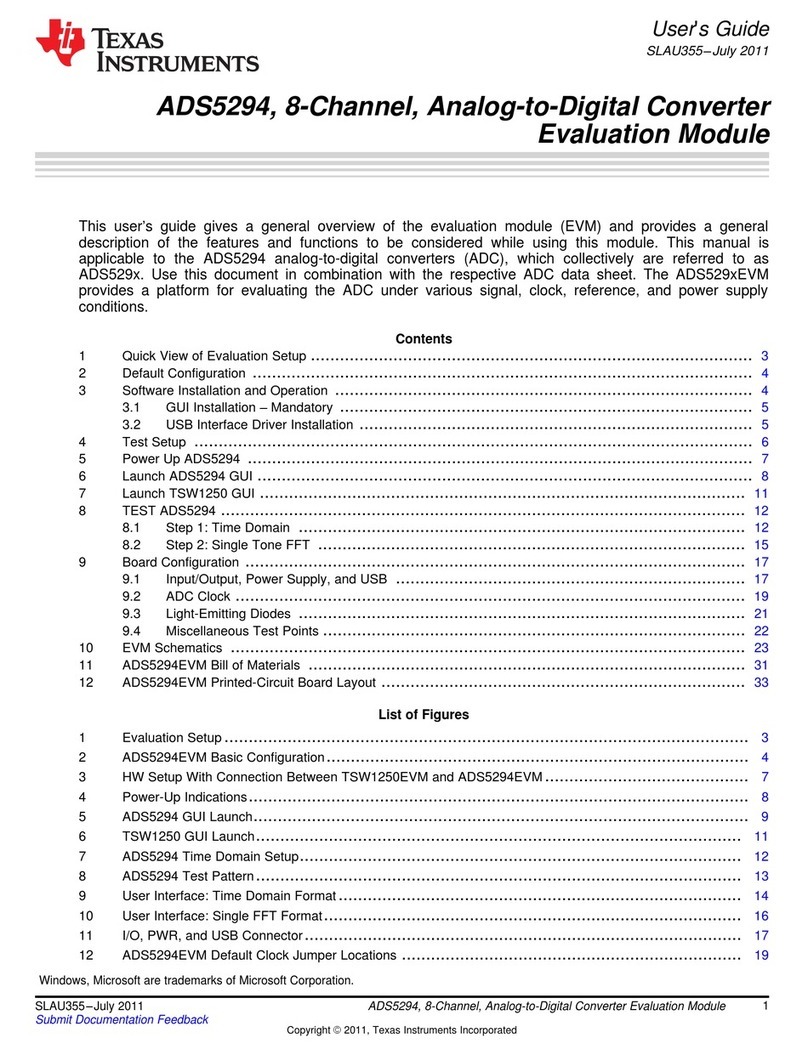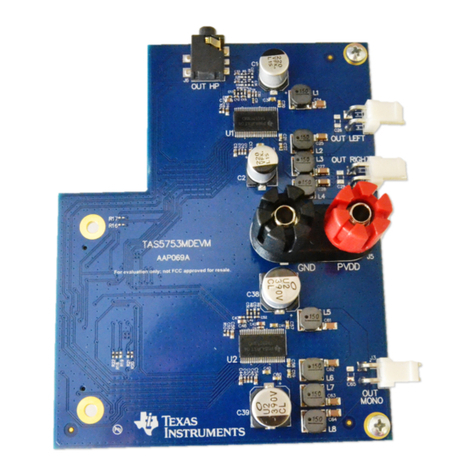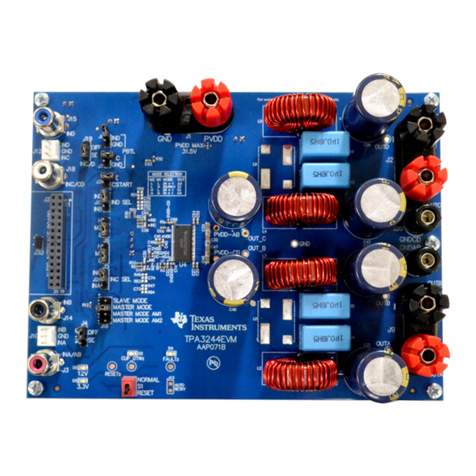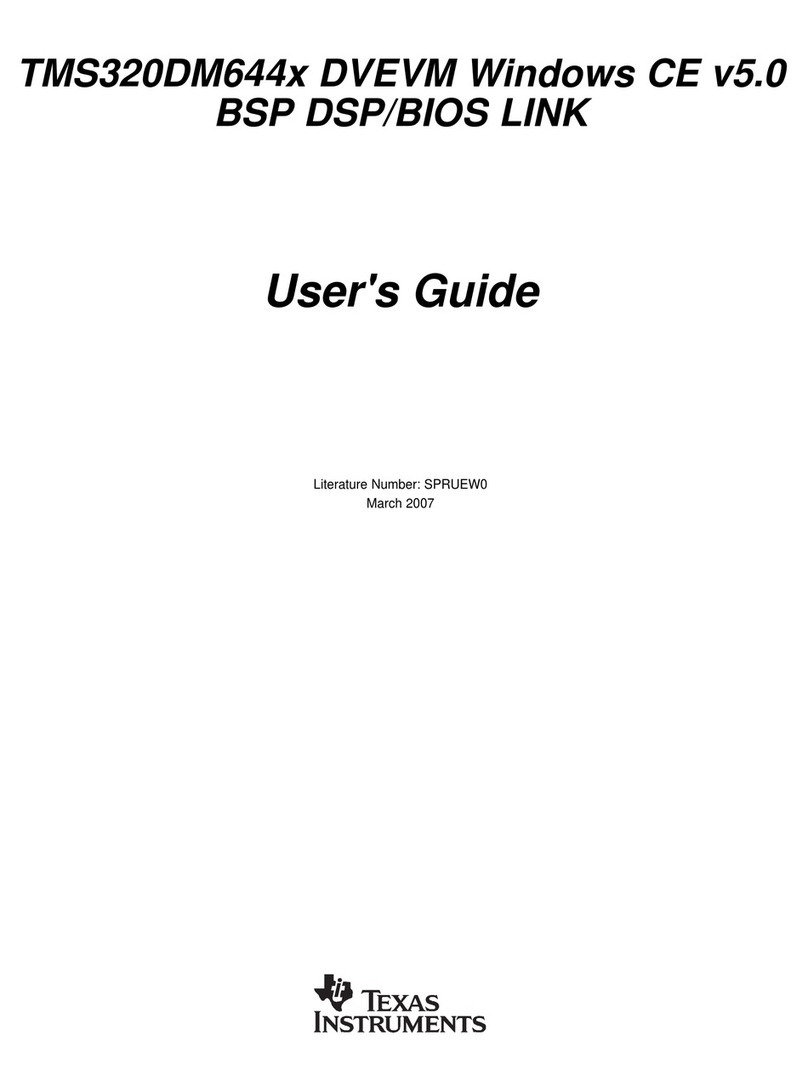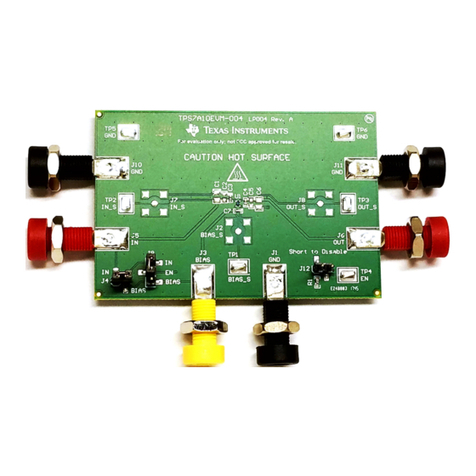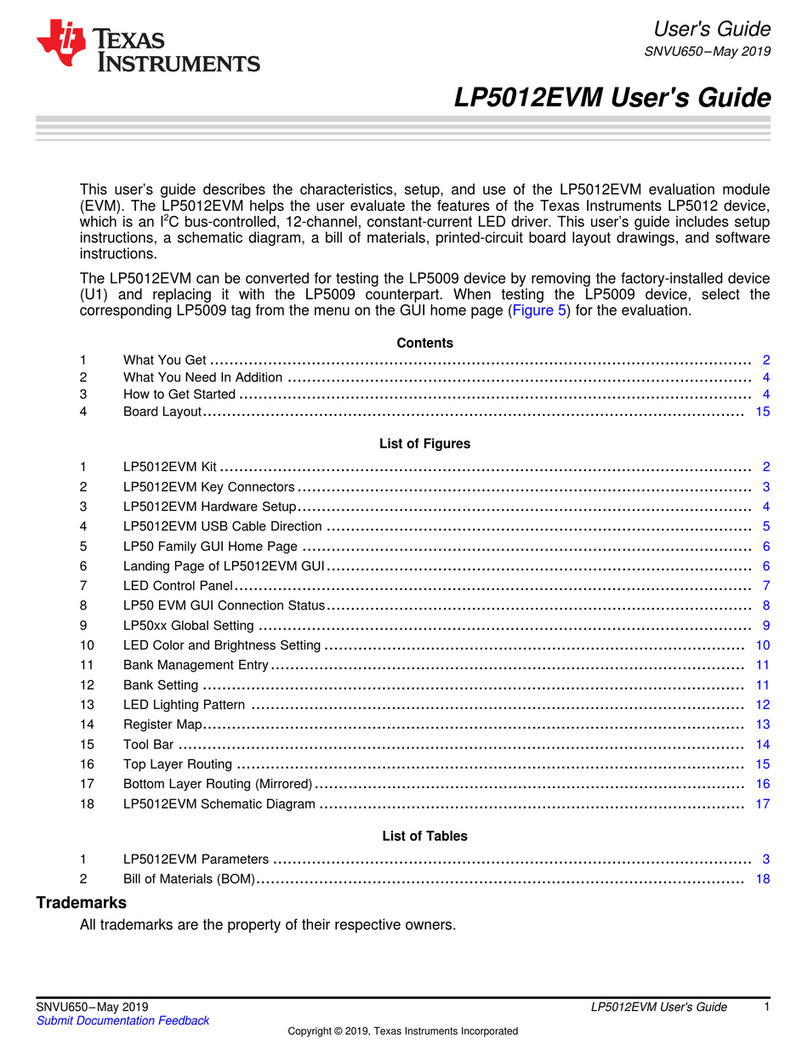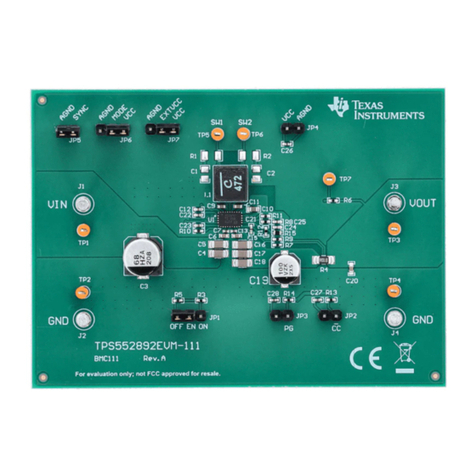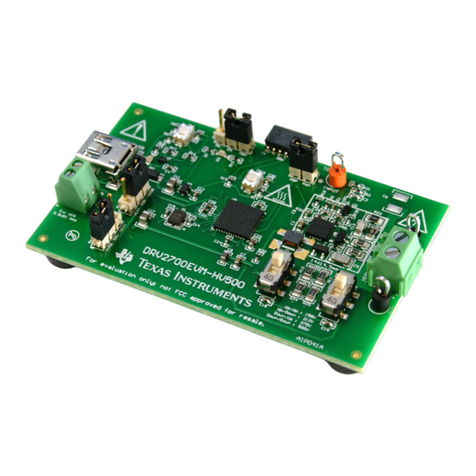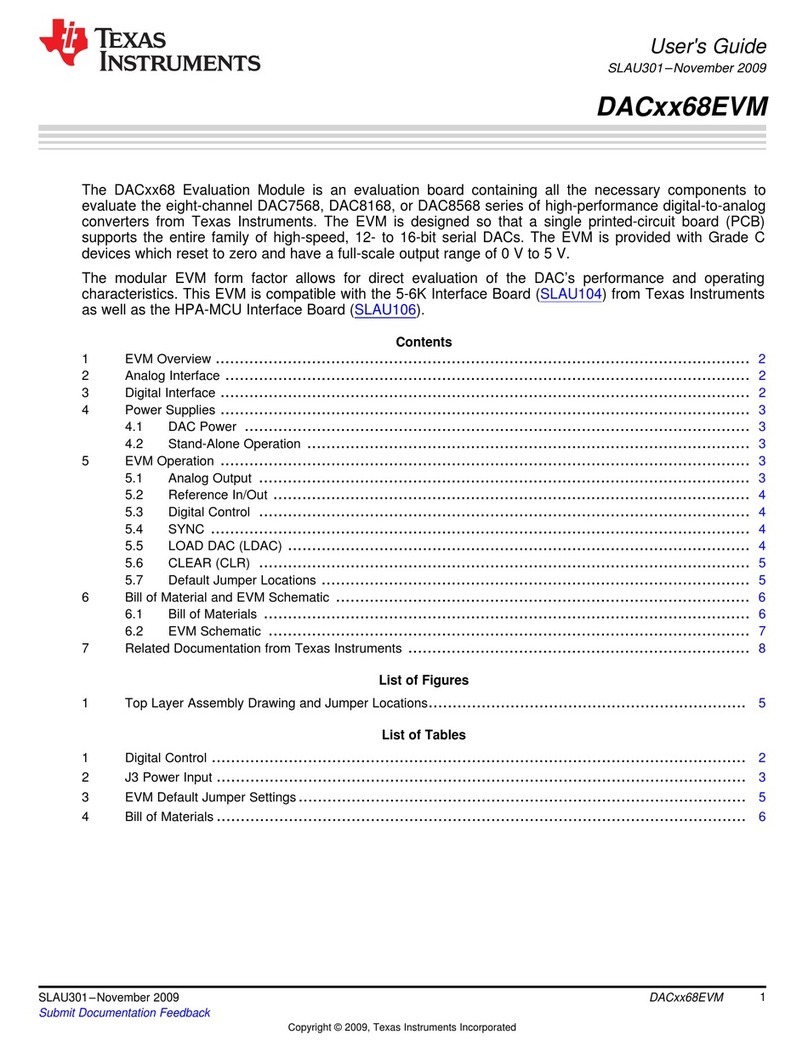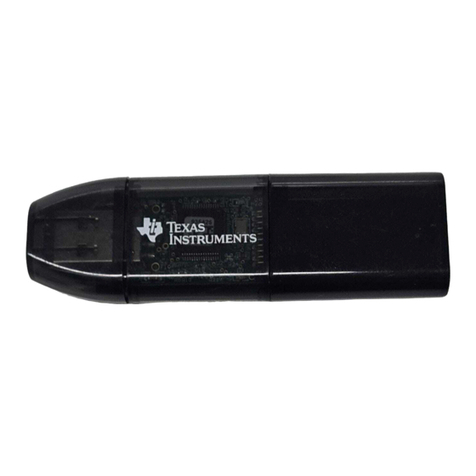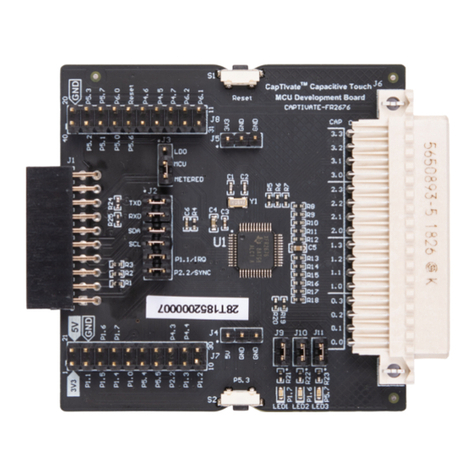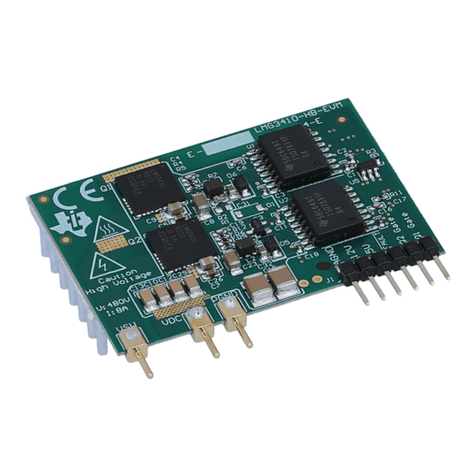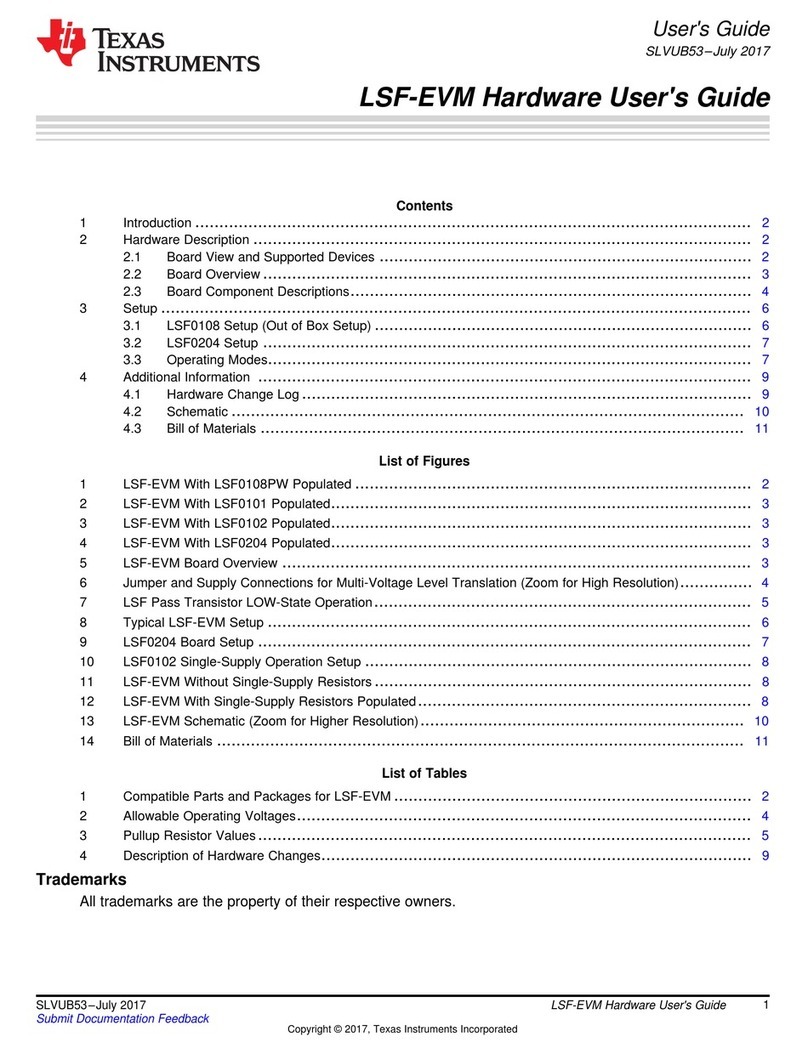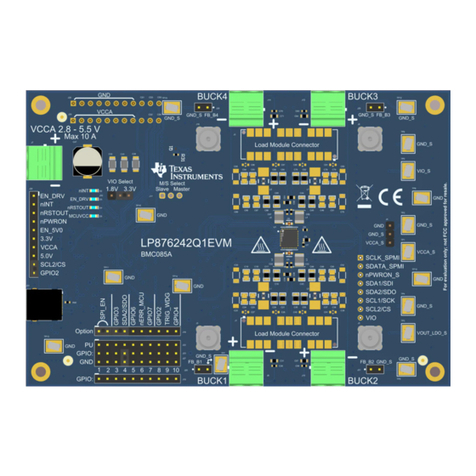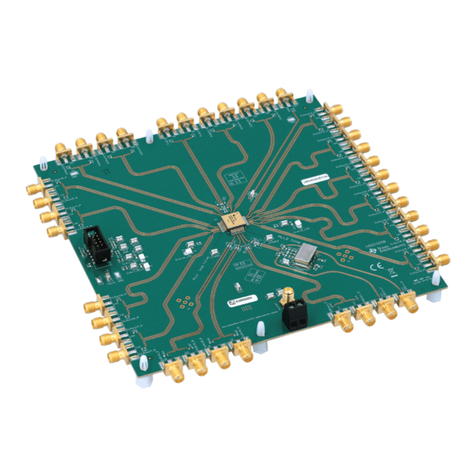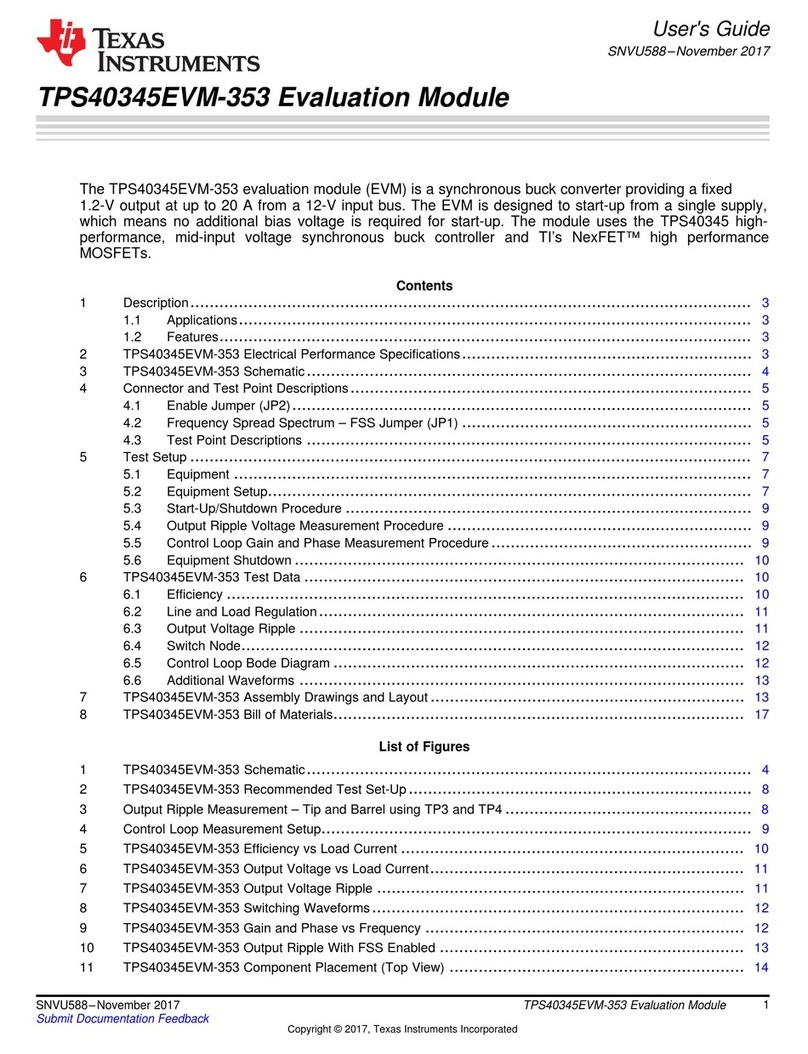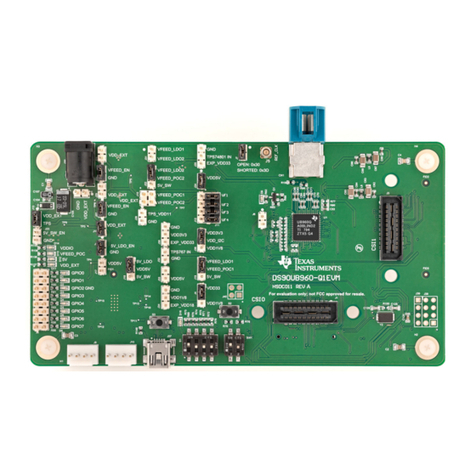
1
SLVUBI9A–October 2018–Revised March 2019
Submit Documentation Feedback Copyright © 2018–2019, Texas Instruments Incorporated
TPS16630-32EVM: Evaluation Module for TPS1663x
User's Guide
SLVUBI9A–October 2018–Revised March 2019
TPS16630-32EVM: Evaluation Module for TPS1663x
This user’s guide describes the evaluation module (EVM) for the Texas instruments TPS1663 family of
eFuse devices, TPS16630 and TPS16632. The document provides EVM configuration information and
test setup details for evaluating TPS1663 eFuse devices with the EVM. The EVM schematic, board layout
and bill of materials (BOM) are also included.
Contents
1 Introduction ................................................................................................................... 1
2 Description.................................................................................................................... 2
3 General Configurations ..................................................................................................... 3
4 EVM Board Assembly Drawings and Layout ........................................................................... 10
5 Schematics.................................................................................................................. 12
6 Bill of Materials ............................................................................................................. 13
List of Figures
1 EVM Test Setup ............................................................................................................. 5
2 Output Voltage Start-Up Waveform ...................................................................................... 7
3 Output Short-Circuit Protection ............................................................................................ 9
4 Top Side Placement ....................................................................................................... 10
5 Top Layer ................................................................................................................... 11
6 Bottom Layer................................................................................................................ 11
7 TPS16630-32EVM Schematic............................................................................................ 12
List of Tables
1 SVHC Summary ............................................................................................................. 2
2 TPS16630-32EVM Options and Setting.................................................................................. 2
3 Input and Output Connector Functionality................................................................................ 3
4 Test Points Description ..................................................................................................... 3
5 Jumper and LED Descriptions ............................................................................................. 3
6 Power Supply Setting for the TPS16630-32EVM........................................................................ 6
7 Default Jumper Setting for the TPS16630-32EVM...................................................................... 6
8 TPS16630-32EVM DMM Readings at Different Test Points........................................................... 6
9 TPS16630-32EVM Oscilloscope Setting for the Output Voltage Start-Up Test..................................... 7
10 TPS16630-32EVM Jumper Setting for Current Limits.................................................................. 8
11 TPS16630-32EVM Output Short-Circuit Protection Test............................................................... 9
12 TPS16630-32EVM Bill of Materials...................................................................................... 13
Trademarks
All trademarks are the property of their respective owners.
1 Introduction
The TPS16630-32EVM allows reference circuit evaluation of TI's TPS1663x eFuse devices. The
TPS1663x are 4.5-V to 60-V, 0.6-A to 6-A industrial eFuses with integrated 31-mΩFET, programmable
undervoltage, overvoltage, overcurrent, inrush current protection, and output current monitoring features.
